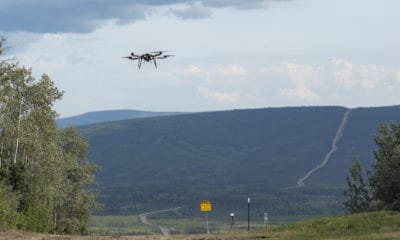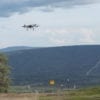How to Scare an Elephant, And Maybe Save Them! (Hint: Use a DJI Phantom Drone)
Drones that sound like bees could be instrumental in saving the lives of wild elephants.
Elephants as a rule, even when fully grown, fear very few predators including lions and humans; but there is something that really does freak them out and it appears to be bees!
Honeybees flying in large swarms have been proven to be enough to make a herd of elephants flee.
An elephant’s bulk and relatively smooth hide provides little protection from bees, which can sting them in numerous tucks and crevices causing unpleasant pain and irritation.
This knowledge has led to some communities in Africa creating boundary fences made of beehives to prevent elephants from raiding their crops, which has been proven to be pretty effective.
Researchers from Duke University in the U.S.A., carried out a series of tests to compare bee sounds with drone sounds,with the idea of developing a system for monitoring African forest elephants.
In a recent report titled “Small UAV Noise Analysis“, they revealed that especially at the high frequency ranges, the similarities were quite significant.
The researchers then took a quadcopter to Wonga Wongue National Park in Gabon, West Africa, and working alongside park rangers called Ecoguards, tested the drone on the elephants.
It quickly became evident that the elephants did not favour being monitored by a drone and would run away from it or even use their trunks to throw dirt at the drone.
This of course is no coincidence as a drone has a similar annoying sound as a bee and an elephant cannot distinguish between the two; to an elephant a drone might represent one enormous angry bee or a large swarm of bees.
The Duke researchers say the reaction was much the same, though some did appear unaware of the drone, and some would not have been able to see the drone which suggests it was hearing the drone that upset them.
While this may be good news for elephants in keeping them away from humans, for humans attempting to track and study elephants, researchers believe the technology has limitations as it clearly distresses the elephants.
However in the Serengeti region in Tanzania, drones have already been used to help minimise conflict between humans and the elephants that graze on their crops.
For their work the Duke team were only able to test a small number of drones and found in particular that an Iris+3DR sounds the least like bees, while a DJI Phantom sounds the most like bees.
The researchers say while this does not suggest that an elephant would only mistake a DJI Phantom for bees and not the 3DR Iris+, it does provide a way to ‘score the absolute “bee-ness”’ of a drone, potentially helping conservationists choose the most appropriate platform for their work, and possibly allowing for targeted modifications to drones to be made to either increase or decrease their ‘ bee-ness’.
This technique could also be applied to other sources of stress as well, depending on what animal the drone will be interacting with.
The researchers note that the data analysis is ‘based on the assumption’ that there is an ‘aural source of discomfort’ displayed by the elephants and say researchers wishing to implement this approach for wildlife conservation need to determine a possible ‘auditory source of discomfort’ for a species of interest.























